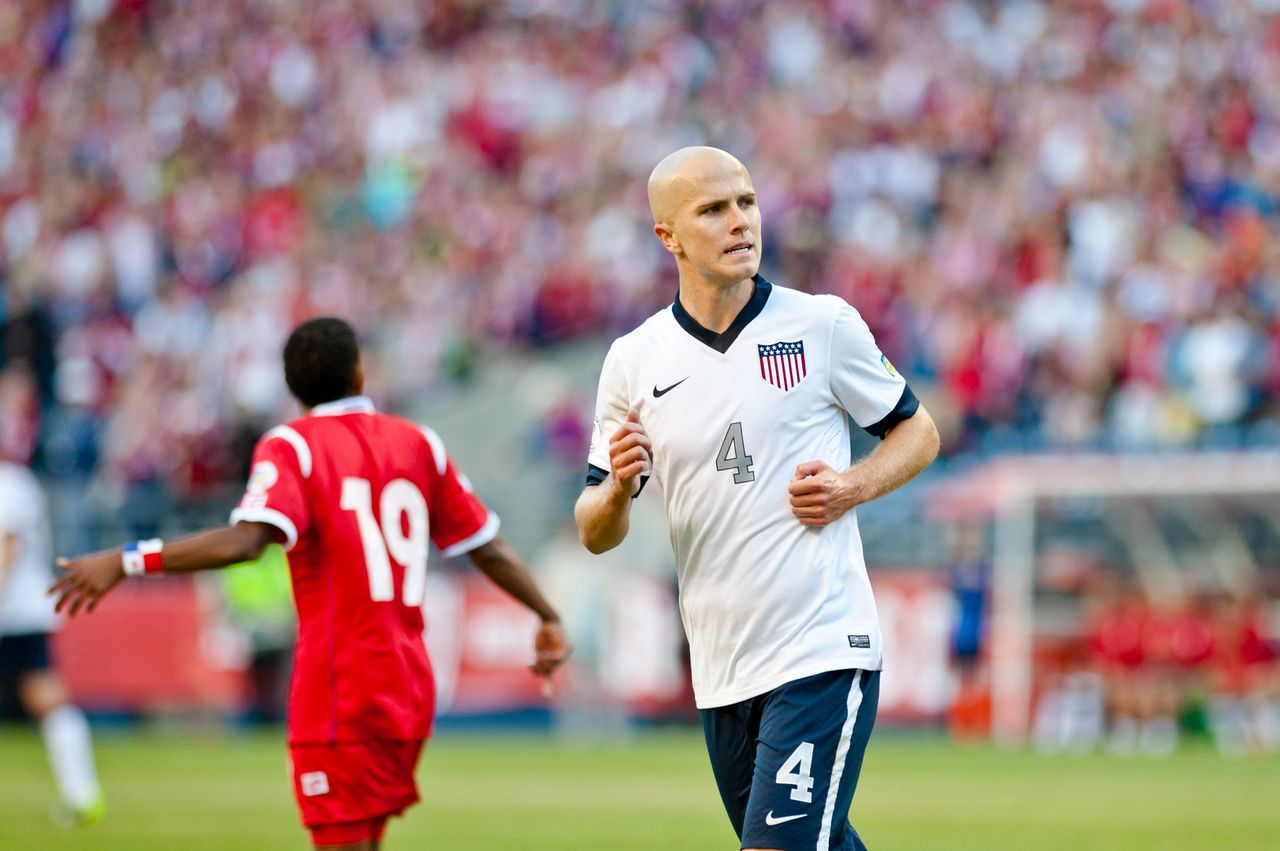
Por: Inside The World Cup
Once thought of as only being in the team because he was the coach’s son, the midfield enforcer is the key man in Jürgen Klinsmann’s side who face a tough-looking Group G
Michael Bradley functions as a kind of footballing Rosetta Stone for the USA team. From his deep-lying midfield position Bradley is the player who, more than any other, speaks all the different dialects of USA football.
Jürgen Klinsmann’s team sometimes struggle to balance Mexican-American technical possession, MLS athleticism and the influence of Klinsmann’s German-American finds, so there are times when the well-travelled and studious Bradley can look like the only player on the team who shares a common language with each of his team-mates.
No wonder the former US player, now ESPN analyst, Alexi Lalas, calls him “a connector” on the field. “I think he’s a player’s player,” Lalas said. “It doesn’t matter where you’re from or whatever – he understands you and you can understand him. Literally on the field he’s a connector – but off the field I think he is too, given his background and the way he thinks about the game. He can play with anybody. There’s nobody more important to the USA national team, nor will there be this summer.”
Simply put, whenever the idiosyncratic USA team blend isn’t working, you can bet that more often than not, the player who gets the gears to stop grinding and start meshing will be Bradley.
However, he wasn’t always seen as so integral. In fact he was serially misunderstood, if not mistrusted, for a long time. Drafted by his father/coach, Bob, for his first professional team, the New York Metrostars, and then again into the national team when his father moved on to coach them, Bradley initially struggled to overcome the suggestion of nepotism – this despite the Dutch side Heerenveen making him the youngest player signed from MLS in 2005, when they noticed his potential in a pre-season friendly.
His shaven head and glowering demeanour have also sometimes seen him mistakenly stereotyped as an enforcer, when his natural intelligence and keen eye for the game meant he was always looking to play a more creative role in midfield, even while never shying from the necessary dirty work. After spells in the Netherlands and Germany, and a brief unhappy loan spell at Aston Villa, Bradley really flowered when he got the chance to move to Italy, possibly because of – rather than in spite of – moving to one of Serie A’s less glamorous teams.
It was with Chievo that Bradley’s appreciation of the tactical side of the game was honed as the player, who became fluent in Italian within three months, began soaking up a coaching philosophy that was all about finding pragmatic ways to compete in games against better resourced teams. As Bradley put it recently: “The small Italian teams are convinced that the only way to compete is to be tactically perfect and tactically prepared for every scenario. The day before a game at Chievo we’d be on the field for two and a half hours and the coach would be screaming like a mad man going over throw-ins and goal kicks and kick-offs. He would have 11 guys lining up and telling us what to do on a kick-off.”
And Lalas, a fellow American traveller to Italian football, concurs. “Michael’s 10 times the player I ever was, but I benefited so much from playing in Serie A, because of the way they think about the game – the tactical discipline and devotion and passion and love for the tactics of the game. And I think when he got to Italy he found he was immersed in a culture that thought like him to a certain extent. And he grew as a person, as a player, being in that culture, because that’s the way he thinks about the game. He has the tools to implement that on a consistent basis.”
Such incremental edges will be crucial to the USA’s hopes in Brazil, where they can expect to play a lot of their three group games, against Ghana, Portugal and Germany, on the back foot – hoping to take advantage of rare opportunities. To those without confidence, it’s the sort of game dynamic that can breed timidity. For Bradley, who relishes the well-timed counterpunch and who in a recent interview called possession “the most overrated stat”, fighting on the defensive suits him fine.
Tellingly, Bradley’s role model was once Roy Keane, but changed to the subtler long-and-short passing vision of Demetrio Albertini during his time in Italy. In his burgeoning partnership with Jermain Defoe at Toronto, it’s not uncommon to see Bradley sending sand-wedge-soft through balls into narrow gaps for the Englishman to run on to.
Not that there aren’t still moments of Keane-like box-to-box directness. If you watch highlights of the World Cup qualifying campaign, there’s a moment during a game against Panama, in Seattle, where you can see Bradley race up the middle of the field, looking not so much as if he’s running towards the Panama goal, but intending on running through the Panama keeper. As he nears the edge of the box he pushes the ball wide where it’s swept into the box for a team-mate to finish, and only then does Bradley change direction to veer off and celebrate. For all his range of movement, “the connector” knows that the shortest distance to goal is a straight line, run at the right time. USA fans hope his time is this summer.
